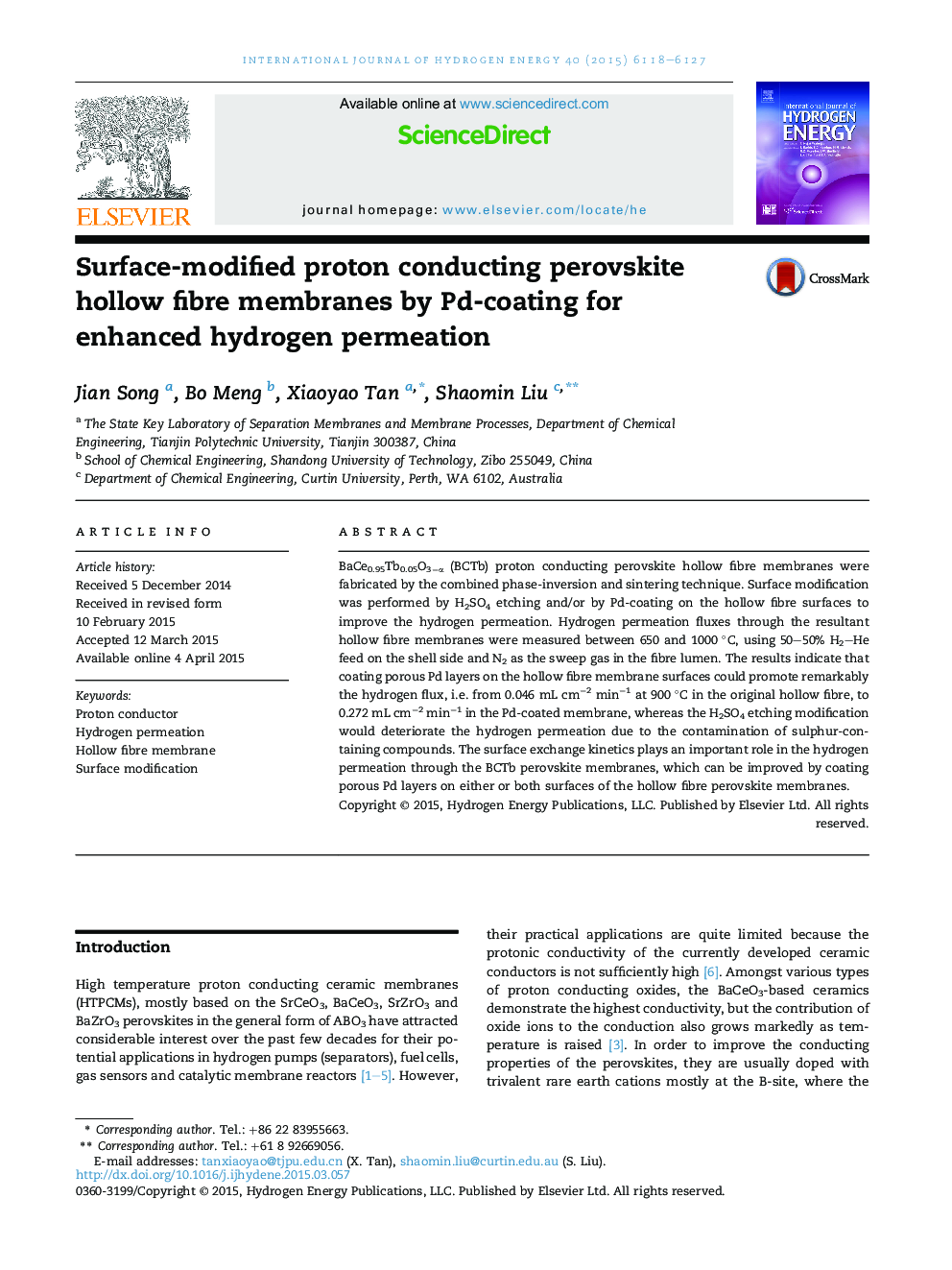| Article ID | Journal | Published Year | Pages | File Type |
|---|---|---|---|---|
| 7715635 | International Journal of Hydrogen Energy | 2015 | 10 Pages |
Abstract
BaCe0.95Tb0.05O3âα (BCTb) proton conducting perovskite hollow fibre membranes were fabricated by the combined phase-inversion and sintering technique. Surface modification was performed by H2SO4 etching and/or by Pd-coating on the hollow fibre surfaces to improve the hydrogen permeation. Hydrogen permeation fluxes through the resultant hollow fibre membranes were measured between 650 and 1000 °C, using 50-50% H2-He feed on the shell side and N2 as the sweep gas in the fibre lumen. The results indicate that coating porous Pd layers on the hollow fibre membrane surfaces could promote remarkably the hydrogen flux, i.e. from 0.046 mL cmâ2 minâ1 at 900 °C in the original hollow fibre, to 0.272 mL cmâ2 minâ1 in the Pd-coated membrane, whereas the H2SO4 etching modification would deteriorate the hydrogen permeation due to the contamination of sulphur-containing compounds. The surface exchange kinetics plays an important role in the hydrogen permeation through the BCTb perovskite membranes, which can be improved by coating porous Pd layers on either or both surfaces of the hollow fibre perovskite membranes.
Related Topics
Physical Sciences and Engineering
Chemistry
Electrochemistry
Authors
Jian Song, Bo Meng, Xiaoyao Tan, Shaomin Liu,
